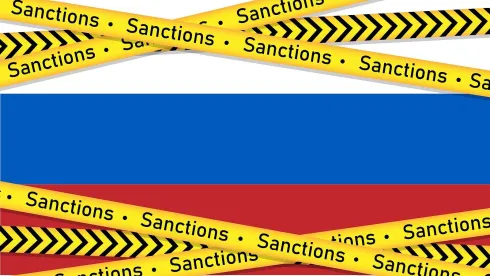The United States and its allies are aiming to choke off the supplies that support the last vestiges of Russian industry. On May 19, 2023, the Bureau of Industry and Security (BIS) released new regulations implementing additional restrictions under the Export Administration Regulations (EAR) as well as corrections and clarifications on existing controls for Russia and Belarus.[1] Those additions build on recent export control regulations issued on February 24, 2023 (which we discuss here) and significantly expand controls over items that can be used in even basic electronics and manufacturing. The new regulations continue BIS’s push to leave very little that may be sent into Russia from the United States.
BIS’s press release discussing these changes can be found here.
Ramping Up the Pressure
Since the beginning of Russia’s war on Ukraine, BIS has taken significant steps aimed at cutting off Russia’s industrial base from items that could assist in Russia’s war efforts. BIS first added license requirements for the export, reexport and transfer (in-country) of any items to Russia that fell under certain categories of the Commerce Control List (CCL) (which we discuss here) and then expanded it to cover all of the categories of the CCL (which we discuss here). That left only left EAR99 items—low-level commercial items—untouched. However, BIS then chipped away at the EAR99 items that could be exported to Russia. BIS used import codes (Harmonized Tariff Schedule (HTS) codes) to identify certain EAR99 items that would now be prohibited for export to Russia without a license (which would not be a license easily obtained) (which we discuss here).
Filling in the Gaps
The latest rule adds 1,224 industrial items to supplement no. 4 to part 746 – Russian and Belarusian Industry Sector Sanctions.[2] Essentially, the previous rule had made targeted strikes at certain items designated in certain chapters of the HTS codes. Now, rather than fiddling around with whether a particular piece of ventilation equipment has the size or power to be covered by a specific HTS description, or whether the capabilities of a bulldozer would fall under a particular HTS code, BIS has simply covered whole chapters of the HTS code with the latest prohibitions.
With the latest additions, all HTS codes found in Chapters 84 (machinery and mechanical appliances), 85 (electrical equipment and parts), and 90 (optical, measuring, and photographic items) of the HTS are now restricted and subject to a license requirement when involving Russia or Belarus.[3] BIS noted that its intent was to simplify compliance decisions and that it will review license applications on a case-by-case basis for certain items, such as those predominantly agricultural or medical in nature.
Other New Export Controls
The new rule also broadens the scope of other export regulations[4]:
Broadening of Scope of Supplement No. 6 to Part 746 – Russian and Belarusian Industry Sector Sanctions to Include Certain Chemicals
The new rule adds four new chemicals to supplement no. 6 to part 746. Supplement no. 6 to part 746 is used to control for Russia’s chemical and biological weapons production capabilities which involves discrete chemicals, biologics, fentanyl and its precursors, and related equipment. Because the new additions are not of concern for chemical and biological weapons production capabilities, this reflects a broadening of the scope of supplement no. 6 to part 746.
Expansion of Russia/Belarus Foreign Direct Product (FDP) Rule to Add Crimea Region
The Russia/Belarus FDP rule described in 15 CFR § 734.9(f) now includes the Crimea region. Thus, foreign produced items without any U.S. origin content that meet the product scope and the newly expanded destination scope will be subject to the EAR. The exclusion from license requirements for the Russia/Belarus FDP rule which involve countries listed in supplement no. 3 to part 746 still apply.
Supplement no. 7 to part 746 items which are subject to the Russia/Belarus FDP rule will now apply to the Crimea region.
Conforming or Clarifying Changes
The rule also made conforming or clarifying changes to already existing export control regulations. The changes also add the following, inter alia:
- Clarified that the de minimis exclusion in 15 CFR § 746.8(a)(5) applies to items identified in supplements nos. 2, 4, and 6 for the countries identified in supplement no. 3 to part 746 (countries excluded from certain requirements set forth in 15 CFR §§ 746.7 and 746.8);
- Clarified that license requirements specified in supplements nos. 2, 4, and 6 exclude deemed exports and deemed reexports and this exclusion is only limited to those specific license requirements;
- Clarified that case-by-case license review policy found in 15 CFR §§ 746.5, 746.8, 746.10 applies to replacement licenses for items described in HTS-6 codes that were added to the EAR after the validation date of the license;
- Added ECCN 5A991 to the exclusion for certain items controlled under ECCNs 5A992 or 5D992 that do not require a license under 15 CFR §§ 746.8 and 746.10; and
- Updated supplement no. 5 to part 746 to now use six-digit HTS codes rather than Schedule B descriptions, for ease of reference.
We will continue to monitor new sanctions regulations on Russia and their impact and provide our updates here.
FOOTNOTES
[1] BIS also added 71 new entities to the Entity List.
[2] The rule further identifies certain HTS codes that would also be listed in supplement no. 5 to part 746 or supplement No. 2 to part 746 which would need to comply with other provisions found in § 746.10 ‘Luxury goods’ Sanctions or § 746.5 Russian and Belarusian Industry Sector Sanctions.
[3] We note that when a HTS description mentions parts related to one or more numerical headings, that applies to any Harmonized System (HS) codes that begin with the digits in the range specified (i.e., Headings 8524 to 8528 means any HS code, HTS code, or Schedule B number which has 8524, 8525, 8526, 8527, 8528 as the first four digits).
[4] In BIS’s recently released Iranian unmanned aerial vehicle rule (which we discuss here), BIS inadvertently omitted HTS code 854800. That HTS code is now subject to a license requirement for export or reexport to Iran.




 />i
/>i

